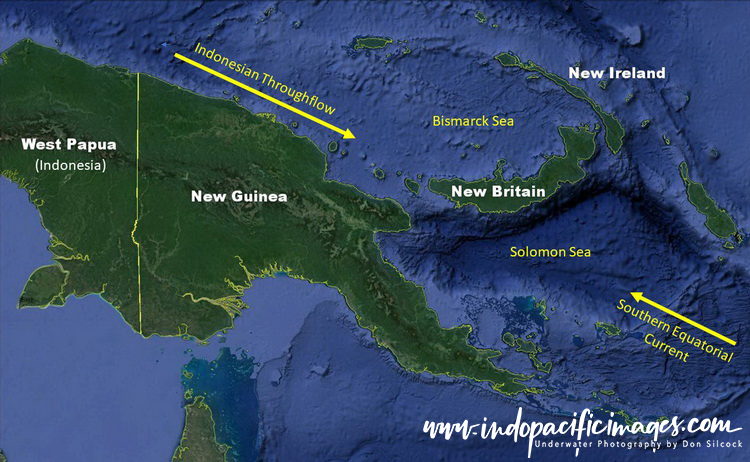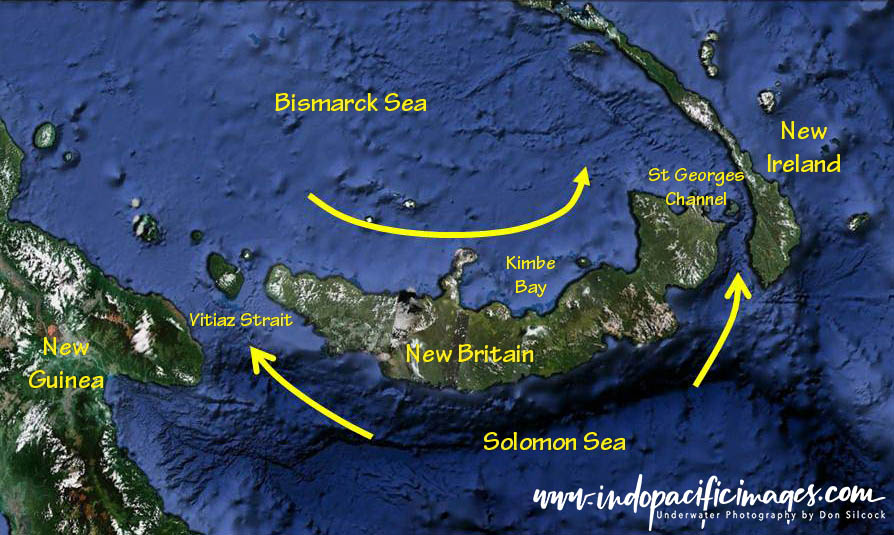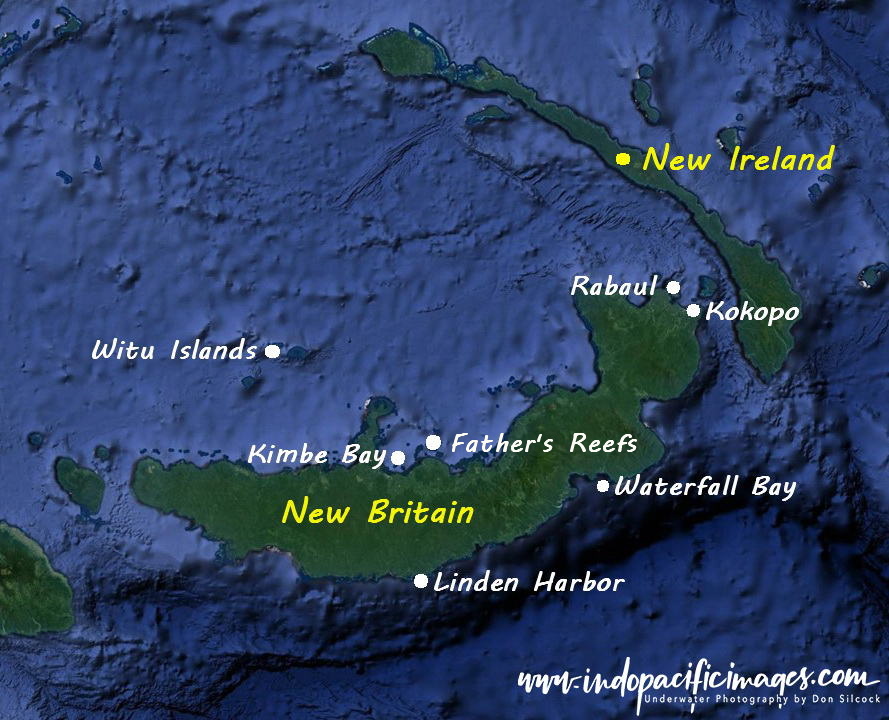New Britain Diving… This long, crescent-shaped island is the largest of Papua New Guinea’s many islands.
Roughly the same size as Taiwan, New Britain has a population of just under 500,000 people.
Which compared to Taiwan’s 24m means that much of the island is uninhabited.
And the main reason for that low population density are the incredible mountain ranges that run down the spine of island.
So high are most of them (red and white) that they effectively isolate the north coast from the south.
Meaning that most of the population live in coastal (green) areas.
With the majority concentrated around Kokopo, the capital of East New Britain Province, nearby Rabaul and Kimbe, the capital of West New Britain.

New Britain Diving – Biodiversity

As they say in the real estate business: location, location, location…
And, from a biodiversity perspective, New Britain has one of the best!
Physically it sits just south of the equator and to the east of PNG’s “mainland” – the eastern half of New Guinea island.
That location puts it at the epicenter of the eastern half of the Coral Triangle.
Which, simply stated, is the richest known area of marine biodiversity anywhere in the world!
Uniquely though, New Britain is exposed to both the Indonesian Throughflow, as it flows down the north-east coast of New Guinea into the Bismarck Sea and the Southern Equatorial Current as it approaches from the Solomon Sea.
As those currents approach the south coast of New Britain, upwellings are created that suck up the nitrogen and phosphorous laden detritus from the deep basins of the Solomon Sea.
And those rich nutrients are transported up the south coast and through the Vitiaz Strait and St Georges Channel in to the Bismarck Sea.
Papua New Guinea’s incredible marine biodiversity is well documented. Less well known though is the intensity of that biodiversity around the island of New Britain. All of which makes for some really phenomenal diving!

New Britain Diving – The Main Locations

There are three main diving locations currently available in New Britain. Kimbe Bay, the Witu Islands and the Father’s Reefs on the north coast.
Rabaul and Kokopo on the eastern tip of New Britain. And Waterfall Bay and Linden Harbor on the remote south coast of New Britain.
Kimbe Bay is mainly day-diving from Walindi dive resort and there are some excellent seamounts and numerous beautiful reefs to experience.
The resort’s two liveaboard MV Oceania and MV Febrina start and end many of their trips diving those reefs and seamounts.
Both liveaboards also cover the Witu Islands and the Father’s Reefs at various times of the year.
There is no other way to dive both locations as day diving is not an option…
Rabaul is the former capital of East New Britain province. But it has largely been eclipsed now by Kokopo after the devastating eruptions of the Tavurvur and Vulcan volcanoes in September 1994.
Both Oceania and Febrina cover the Rabaul area regularly and they are currently the only options. Day diving used to be conducted from Kokopo by both Kokopo Beach Bungalow Resort and Rapopo Plantation Resort but both closed down during the pandemic and have yet to reopen.
The only way to dive the south coast is with Febrina when it schedules trips there.
New Britain Logistics
New Britain has two regional airports – Hoskins (HKN) in Kimbe and Tokua (RAB) to the east of Kokopo. Both of which are served by Air Niugini from Port Moresby.
Back To: The Complete Guide to Diving New Britain
